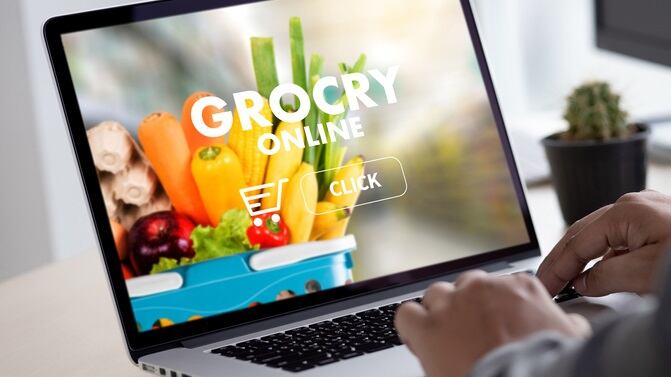In addition, about 35% of products come from search queries that allow the consumer to find exactly what they want quickly – but also allows them to bypass products that they might have added to their cart if they were in a brick and mortar store and discovered them while walking by, Linda Crowder, the media monetization lead for Peapod Digital Labs recently told attendees at the Digital Food & Beverage conference in Austin, Texas.
“This is good news and bad news” for brands, she added, explaining, “It is good news if you’re in the basket they bought before. It is bad news, if you are a new brand and you are trying to break into that basket.”
Luckily for newcomers, one of eCommerce’s “biggest advantages, is we can learn as the consumer shops,” and have plenty of opportunities to recommend additional and new products given how many different ways that consumers can ‘enter’ an e-retailer and all the different shapes their shopping experience can take, she said.
She explained that unlike how consumers almost always purchase something when they visit a physical store, consumers online will visit a website an average of seven and a half times between when they start their basket and they checkout.
These visits include times when they are going through their cupboards to restock items that are running low, when they pause to remember something they needed or are inspired by an email newsletter or recipe they find and want to add key ingredients to their basket before they forget, she said.
On the one hand, this constant “in and out” and failure to close a basket sale can be disconcerting and disruptive, but it also provides additional opportunities to recommend complementary products – including ones they may never have purchased online before, she said.
For example, the first time that a consumer visits an eCommerce site, Crowder recommends that the retailer and brands stick to the basics and let consumers feel out what is available and how that aligns with what they need – this way they aren’t overwhelmed.
The second visit, though, is when retailers and brands can become more creative, she said. This is when a retailer might spot that there are multiple bags of chips in the cart and recommend buying salsa or other complementary items.
By the third or subsequent visit, the consumer likely is comfortable and will be more open – and even grateful – for recommendations based on their current and past purchases, she said.
For example, a retailer can track if a person often buys chicken and then recommend new recipes for preparing the chicken that would also introduce the shopper to different ingredients and products.
“So, you can slowly build up the items in the cart,” which once they have been purchased will reappear on subsequent visits as suggestions for re-ordering, she said.
In addition, she said, “there really is an opportunity to provide much more targeted promotions… You can work with your CPG partners to really provide a lot more relevant product suggestions and product ideas to consumers that are going to be specific to that shop, which obviously is very helpful to the marketing team.”
Beyond boosting the diversity and size of a basket, “the beauty here is that … consumers develop a sense of loyalty because they will say, ‘This isn’t just a place I can got to get a product. This is a place that understands my needs and can provide me solutions,’” she said.




